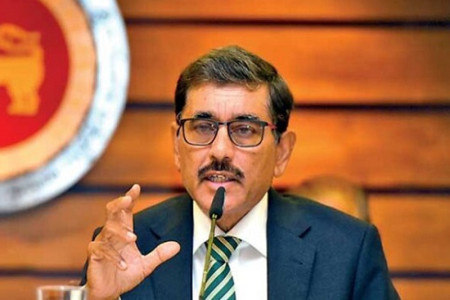Maintains policy rates at current levels; SRR at 2%
Stresses on need for full monetary policy action transmission before further rate reductions
A detailed circular outlining administrative measures and steps to reduce market interest rates to be issued to banks
Anticipates at least 3% reduction in interest rates by December through circular-announced measures
The Monetary Board of the Central Bank yesterday slapped banks with administrative measures to reduce the notable spread between market deposit rates and lending rates despite the substantial easing in the policy interest rates.
Central Bank yesterday announced the Monetary Board’s decision to impose caps on several idenfied financial products, aiming to address the considerable disparities in lending rates that exist among banks.
The caps set the annual interest rate limit at 18 percent for pawning facilities, 23 percent for pre-arranged temporary overdrafts, and 28 percent for credit cards.
“In response to the monetary policy actions taken in the last couple of months, we have to acknowledge that there is a decline in market interest rates. However, we would like to witness a more accelerated downward trend in these rates,” Central Bank Governor Dr.Nandalal Weerasinghe told the post-monetary policy presser held yesterday in Colombo. During the sixth monetary policy review meeting held on Tuesday, the Monetary Board of the Central Bank reached a decision to maintain the current levels of the Standing Deposit Facility Rate (SDFR) and the Standing Lending Facility Rate (SLFR) at 11.00 percent and 12.00 percent, respectively.
The Statutory Reserve Ratio or the banks’ reserve requirement, which was slashed by 2 percent in mid-August in a bid to improve liquidity in the system, was also kept untouched.
Kicking off the relaxing cycle, the Monetary Board slashed policy rates by 250 basis points in June, which was followed by another 200 basis points cut in July.
“Before cutting the rates further, we wanted to ensure the full transmission of the previous monetary policy actions we have taken,” Dr. Weerasinghe said, explaining the rationale behind introducing administrative measures and the present monetary policy stance.
“…despite the considerable easing of monetary conditions, interest rates on certain lending products of some financial institutions continue to remain excessively high posing hardships for individuals and businesses, particularly small and medium scale enterprises,” the monetary policy review document issued by the Central Bank stated.
“…based on data available until July 2023, a sustained recovery in credit extended to the private sector by LCBs is yet to be observed.
Therefore, it is essential that market lending interest rates are lowered by financial institutions in line with the eased monetary policy stance of the Central Bank, thereby boosting credit flows to the economy, which in turn would help the revival of economic activity,” it added.
Meanwhile, Dr. Weerasinghe said a detailed circular containing the administrative measures and the steps that should be taken to bring down market interest will be issued to banks today.
He noted that they expect the gap between the current policy rates and the market rates to come down by at least by 3 percent by the end of December with the measures that will be announced in the circular.
He attributed the delay in the reduction of market lending interest rates to the obstacles encountered in finalising the Domestic Debt Optimisation (DDO) process, which has been hindered by legal complications, with certain parties going to courts against it.
By Indika Sakalasooriya


